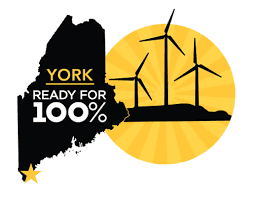Getting Ready: Cooling with a heat pump
Some individuals are unaware that a heat pump is both a heater and an air-conditioner.
It’s hot and humid outside, so let’s consider cooling with a heat pump. It’s important to note that there is no extra cost or hardware to get a heat pump to cool. It’s just a mode button on the remote control or unit: Heat, cool, dry or fan. Let’s press the cool button and learn more.
In the cooling mode, a heat pump works just like any AC unit: it takes heat energy from inside the building and transports it outside, where it is transferred to the environment. A refrigerant circulates through copper tubing in a closed system to transfer the heat. The drip from an AC unit or heat pump is water from the air that is cooled to a dew point or temperature where it condenses, like dew forming on the grass when it cools overnight. This process of cooling air until the water vapor condenses is dehumidification. Both heat pumps and air-conditioners dehumidify when in the cooling mode; this is important for human comfort.

When purchasing an air-conditioner you select a certain size or cooling capacity. It’s the same with a heat pump. The capacity is expressed in thousands of BTUs per hour. (Fun fact: a BTU, or British Thermal Unit, is a measure of the amount of heat required to raise the temperature of one pound of water by one degree Fahrenheit.) A 9K (K=1,000) air conditioner or heat pump has a cooling capacity of 9,000 BTU/hour. The rule of thumb is that you need 20 BTU/hour for each square foot of space. Of course, other factors such as poor insulation, high ceilings, and sun exposure affect the actual amount of cooling needed. Window air conditioners are generally for a small room (5-7K), medium room (7-9K) and large room (9-12K). Window unit capacity is limited by the amount of electrical power that can be supplied in a standard household outlet. Central AC, on the other hand, has very high cooling capacities - 18K and above. Heat pumps run the full range from small to very large. Generally, the most efficient heat pump systems are in the 9-18K range. Like central AC, heat pumps are typically installed on a dedicated 220V electrical line, which allows for sufficient power to support a large cooling capacity.
Getting Ready: Will we ever get rid of plastic?
One obvious difference between a mini-split heat pump and a traditional central AC system is how and where it is installed. A heat pump’s inside and outside units should be located as close to each other as possible for the greatest efficiency. Heat pump indoor units are not hidden in the attic or basement like central air systems; rather, they are in bedrooms, living rooms, kitchens, etc., often unobtrusive and near the ceiling. Cooling right in the target area increases the efficiency of the system because there are no duct losses or large fans to push air throughout the building. Cooling on the spot makes it easy to have different temperatures in different areas of the home.
The Seasonal Energy Efficiency Ratio (SEER) is used to measure the efficiency of both central air conditioners and heat pumps. SEER measures the amount of cooling per unit of electricity consumed. The higher the SEER, the more efficient the system. High-efficiency heat pumps have SEERs of 18 and above. Energy Star central air conditioners have a SEER rating of 15 and above. Some central AC and heat pump systems have SEERs in the 20s. The high efficiency is due to a relatively new technology called variable speed compression. Traditional compressors cycled on and off to meet cooling load, whereas variable speed systems can adjust the compressor speed to match the cooling demand, thus creating significant energy savings as well as very quiet operation.
Getting Ready: Bamboo- An outstanding renewable resource
By now I hope you are considering a highly efficient heat pump that works just like a very efficient air conditioner! One huge difference between a heat pump and an air conditioner is that with a heat pump you can change from cooling to heating with the press of a button and have the most affordable, cleanest heat available in Maine. The agency Efficiency Maine offers sizable rebates for efficient heat pumps. It’s not surprising that Maine is ahead of schedule in its goal to install 100,000 heat pumps by 2025. If the summer heat has you thinking about cooling off, it could be time for a highly efficient heat pump.
Michele Putko volunteers with York Ready for Climate Action. YRCA is a grassroots citizens’ organization dedicated to increasing awareness of the causes and effects of climate change and advancing environmentally friendly and inclusive policies and behaviors. For more information see yorkreadyforclimateaction.org or email info@yorkreadyfor100.org.
This article originally appeared on Portsmouth Herald: Getting Ready: Cooling with a heat pump
